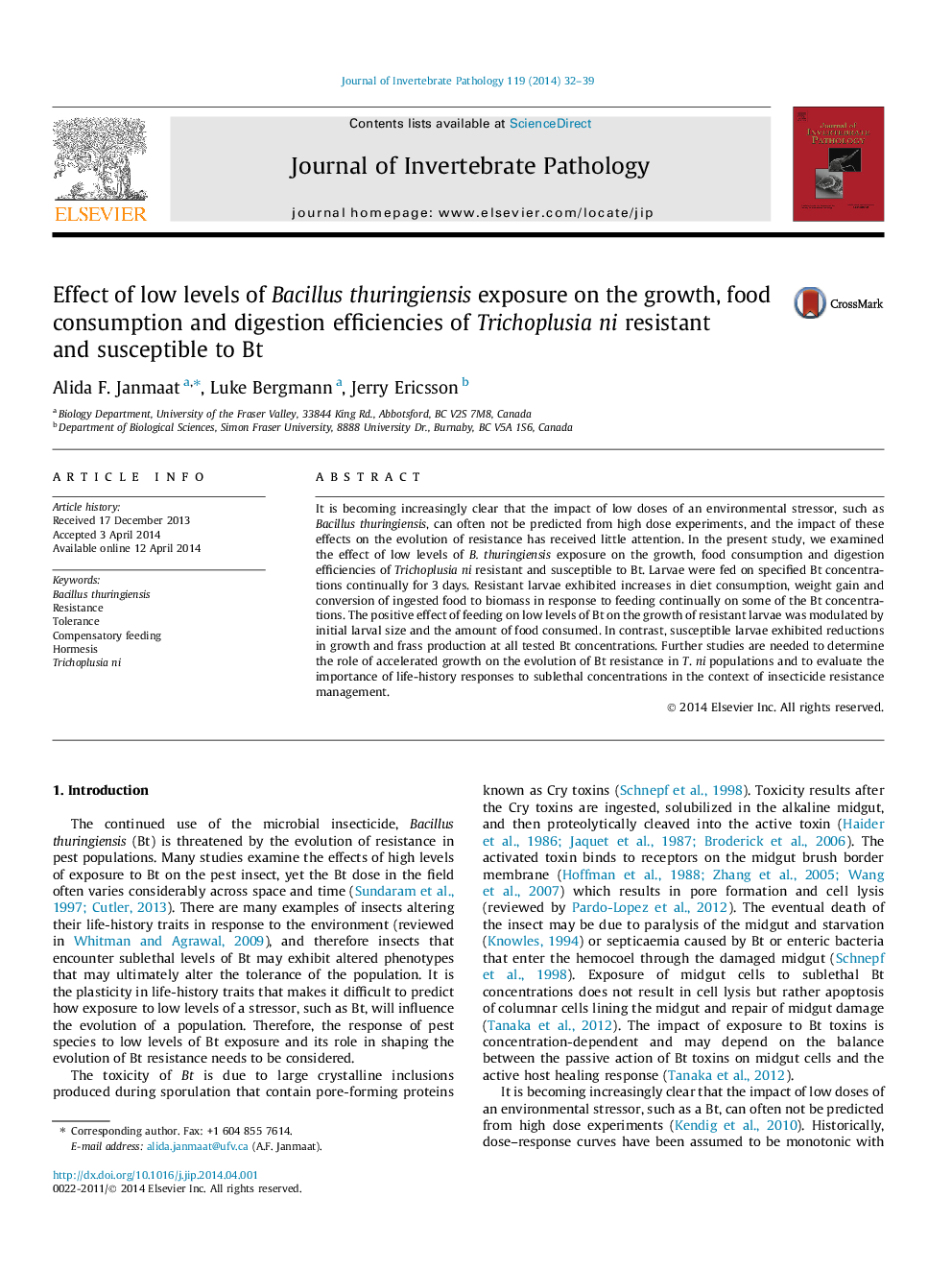| Article ID | Journal | Published Year | Pages | File Type |
|---|---|---|---|---|
| 4557714 | Journal of Invertebrate Pathology | 2014 | 8 Pages |
•Effect of low levels of Bt exposure on Trichoplusia ni resistant and susceptible to Bt was examined.•Larvae were fed diet with Bt or were pre-exposed to Bt and transferred to diet with or without Bt.•Resistant larvae exhibited increased diet consumption at the lowest tested Bt concentration.•Growth of resistant larvae increased when exposed to some Bt concentrations.•Susceptible larvae exhibited reductions in growth at all tested Bt concentrations.
It is becoming increasingly clear that the impact of low doses of an environmental stressor, such as Bacillus thuringiensis, can often not be predicted from high dose experiments, and the impact of these effects on the evolution of resistance has received little attention. In the present study, we examined the effect of low levels of B. thuringiensis exposure on the growth, food consumption and digestion efficiencies of Trichoplusia ni resistant and susceptible to Bt. Larvae were fed on specified Bt concentrations continually for 3 days. Resistant larvae exhibited increases in diet consumption, weight gain and conversion of ingested food to biomass in response to feeding continually on some of the Bt concentrations. The positive effect of feeding on low levels of Bt on the growth of resistant larvae was modulated by initial larval size and the amount of food consumed. In contrast, susceptible larvae exhibited reductions in growth and frass production at all tested Bt concentrations. Further studies are needed to determine the role of accelerated growth on the evolution of Bt resistance in T. ni populations and to evaluate the importance of life-history responses to sublethal concentrations in the context of insecticide resistance management.
Graphical abstractFigure optionsDownload full-size imageDownload as PowerPoint slide
